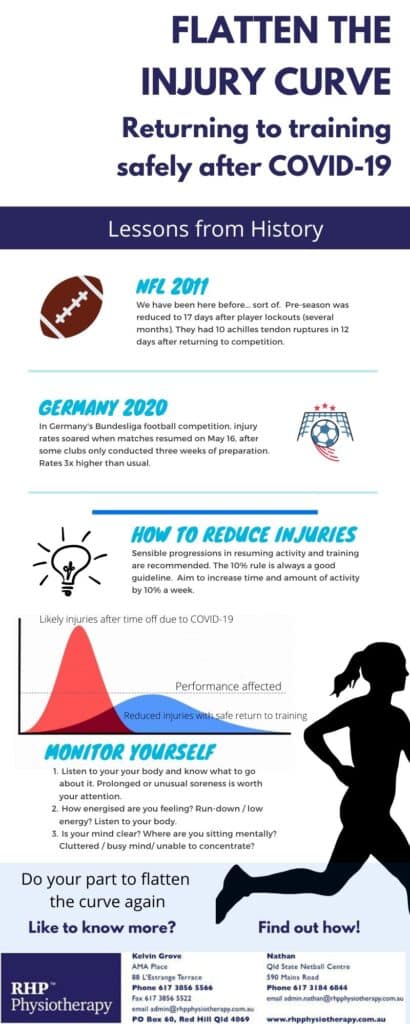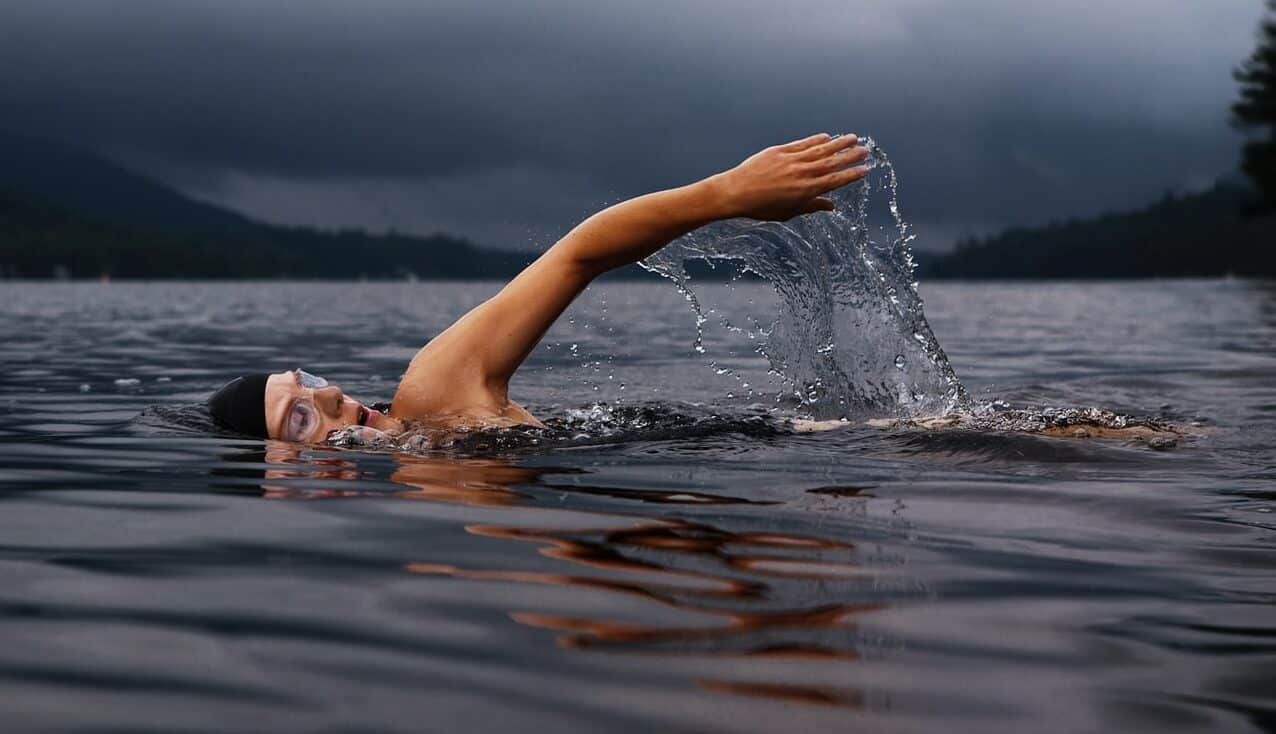Physiotherapists are preparing for an influx of sporting related injuries now that Australian Coronavirus restrictions are allowing a return to elite and community sport to begin.
We are, however, urging caution with regards to that return to sport. Flatten the curve of injury will become a new focus for many of us as coaches, athletes and sports specialized physiotherapists.
Lessons from history
We have seen in many instances that a shortened pre-season after an extended lay-off will result in a spike of injuries. In the NFL in 2011, after a shutout period, the athletes were allowed to return to the game with minimal preparation, which resulted in 10 Achilles tendon ruptures within two weeks of competition. This is WAY too high.
Recently, the Bundesliga in Germany (top-flight football/ soccer), returned after a three-week pre-season following their Covid-19 lockdown. The first round saw three times as many injuries reported as compared to the same round of a normal season. Furthermore – this number is double the usual injury rate for the first two rounds of a normal season, which is the only other time that competition ‘resumes’ in a normal setting.
So, we expect some injuries, but can we be smart about our preparation?
Yes.
General Advice
No pre-season should be shorter than six weeks. If the sport has not allowed for this time-frame in team training, consider your expectations for the early part of the competitive season.
If athletes have been highly active during the lockdown period, this may serve them well as individuals.
Do not have the same expected time-frame for a return to high level performance of all athletes, especially if they have not been able to remain highly active in the past month.
- Did the athlete contract the virus?
- An extended and gradual return to high intensity activities is recommended and clearance from a medical practitioner is also advised.
- If there are no obvious medical concerns in returning to training, this does not mean we should expect that all athletes can compete at their highest level within 4 weeks. Take your time.
- Do you have a protocol in case an athlete does get sick/ contract Covid-19?
Monitor recovery and adaptation
- Everyone responds differently to a training stimulus. Some athletes bounce back quicker than others. Respect this and have a conversation with your athletes
- Consider using athlete monitoring tools such as:
- Daily wellness questionnaire
- Training load monitoring
- Rating of Perceived Exertion x Minutes trained can provide a number for monitoring the weekly and monthly workload. Aim to stay below 30-50{0c4a2a48699e6673be59f9472568296482bb63bcf6fa28ac1e565ead9da9940d} increases in training.
- Heart Rate
- Distance and Speed
- Many, many options
- Most importantly, encourage adequate sleep, nutrition and allow for recovery time between sessions.
Physical qualities of the sport
Consider the sport specific qualities that your athletes require, such as;
- High speed running repetitions and distance
- Change of direction
- Jumping/ landing repetitions
- Contact/ tackling
It will be important to consider these details and gradually introduce components over a minimum of 6 weeks for most sports.
- Consider elements of the game that can be practiced away from training using mental imagery. “Perfect practice makes perfect” and vivid mental imagery can help.
- Dedicate time for the fundamental skills, including contact/ collision where appropriate and allowed.
- Progress activities from simple to complex and predictable to reactive before attempting in a fatigued stat
- Psychological wellbeing and nutrition are both very key for recovery and performance of athletes.
- Provide an open environment for support and discussions about the potential challenges and consequences of isolation. Nurture the team environment.
- Encourage a good diet! Resources can be found on the AIS website.

